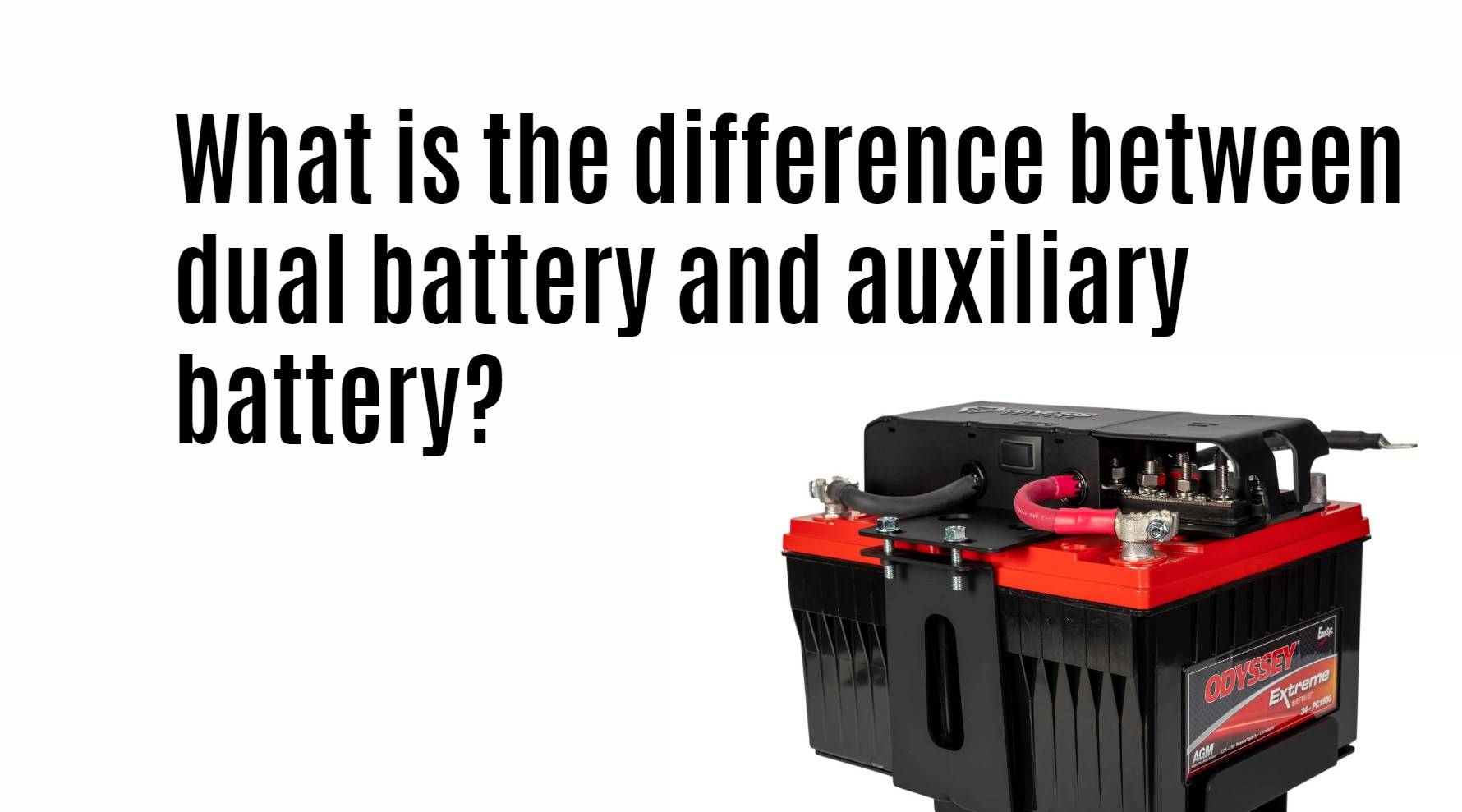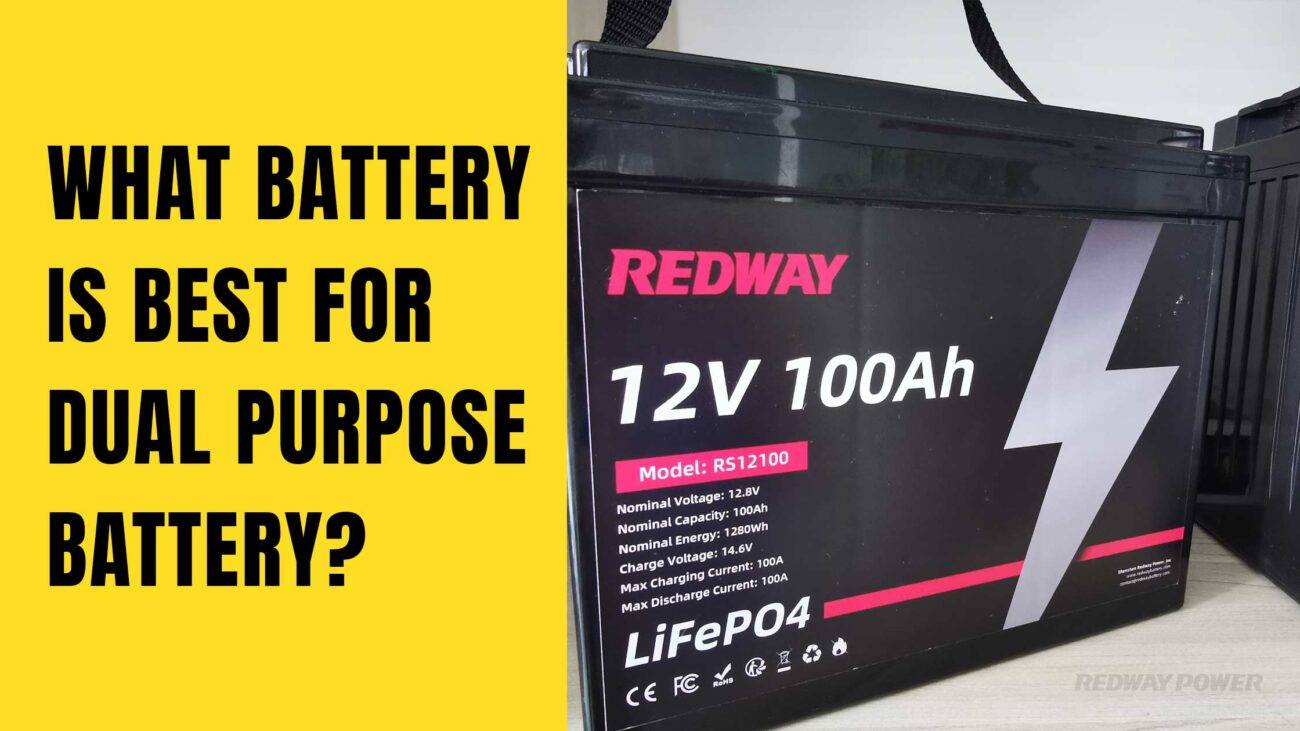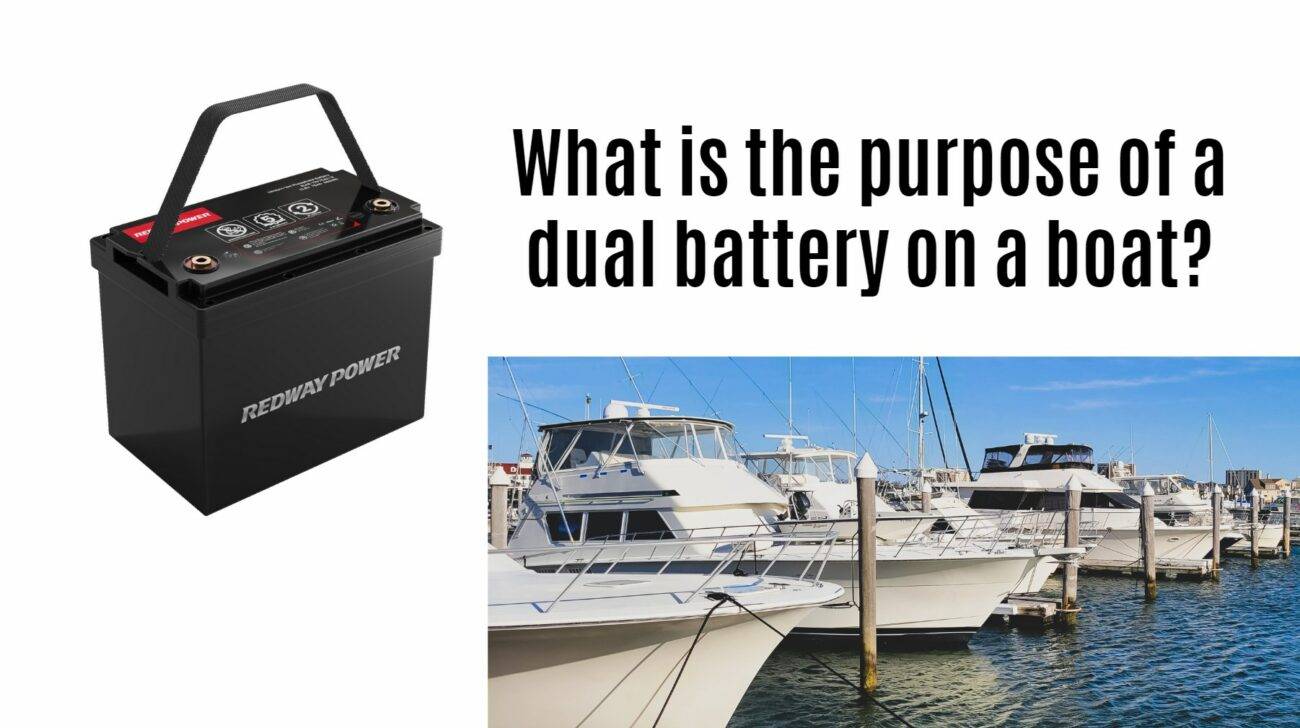
Blog
What is the Difference Between a Dual Battery and an Auxiliary Battery?

A dual battery system is an overall setup with two batteries in a vehicle: a starter battery and a secondary battery isolated to power accessories without draining the main battery. An auxiliary battery refers specifically to the secondary battery in this system, dedicated to powering non-essential devices. Redway Power’s lithium battery solutions optimize both components for durability and reliable power delivery.
Table of Contents
ToggleWhat is a dual battery system?
A dual battery system incorporates two batteries: the starter battery for engine ignition and core vehicle functions, and a second, auxiliary battery dedicated to powering accessories such as fridges and lighting. The system uses isolators, relays, or battery management systems to prevent accessory loads from draining the main battery, protecting reliable engine starts.
Wholesale lithium golf cart batteries with 10-year life? Check here.
What is an auxiliary battery?
An auxiliary battery is the secondary battery in a dual battery system, designed exclusively to power accessories independently of the starter battery. This separation allows extended use of devices without risking the vehicle’s ability to start.
How do dual battery systems distribute power?
Power distribution within dual battery setups is managed by isolators or DC-DC chargers that enable the auxiliary battery to charge while isolating the starter battery when the engine is off, ensuring that accessories do not drain vital starting power.
What are the benefits of using dual battery and auxiliary battery setups?
These systems extend off-grid power capacity, enhance vehicle safety by protecting the starter battery, improve charging efficiency through smart management, and provide flexible, scalable energy solutions ideal for camping, work, and recreational applications.
How are dual battery and auxiliary battery systems installed?
Installation includes mounting matched batteries, wiring through isolators or battery management systems, connecting to the alternator for charging, and often supplementing with solar or AC charging for the auxiliary battery. Proper design ensures balanced charging and safety.
Want OEM lithium forklift batteries at wholesale prices? Check here.
What types of batteries are used in dual battery and auxiliary battery systems?
Common options include flooded lead-acid, AGM, gel, and lithium iron phosphate batteries. Deep cycle AGM and lithium types, like those offered by Redway Power, are preferred in auxiliary roles due to their durability and extended cycle life.
How are dual battery and auxiliary battery systems maintained and monitored?
Maintenance involves regular voltage monitoring, terminal checks, periodic health assessments, and replacement of worn components. Lithium batteries from Redway Power typically require less maintenance due to advanced battery management and quality production.
How do charging options differ for dual battery and auxiliary battery setups?
Charging may occur via the vehicle alternator, solar panels for off-grid power, or external AC chargers. Smart chargers and DC-DC units optimize energy flow and protect battery health, especially important for lithium auxiliary batteries.
What troubleshooting common problems arise in dual battery setups?
Problems like faulty isolators, wiring issues, undercharging, or battery imbalance can reduce system performance. Regular inspection and adherence to quality components from Redway Power help ensure reliability.
What cost and budget considerations relate to these systems?
Lead-acid setups have lower upfront costs but higher maintenance and shorter lifespan. Lithium systems, such as those by Redway Power, require more investment initially but offer better efficiency, longevity, and less upkeep.
What environmental impacts are associated with dual battery and auxiliary battery systems?
Lithium batteries boast lower environmental footprints with less hazardous waste compared to lead-acid types. Redway Power emphasizes environmentally conscious manufacturing alongside high-quality battery design.
What future trends affect dual battery and auxiliary battery technology?
The trend moves toward lithium chemistries, integrated smart management, and renewable charging integration to boost performance, reliability, and sustainability.
Why does understanding the difference between dual battery and auxiliary battery matter?
Clear comprehension helps users plan effective power systems that keep vehicles starting reliably while providing robust accessory power and maximizing battery service life.
Redway Power Expert Views
“The interplay between dual battery systems and auxiliary batteries unlocks versatile energy solutions for modern vehicles and adventures. At Redway Power, lithium technology and intelligent management make these systems safer and more efficient, meeting a wide range of power demands.” — Redway Power Battery Engineer
Conclusion
Knowing the distinction between a dual battery system and its auxiliary battery component is essential for effective vehicle power management. When designed with quality components like Redway Power’s lithium batteries, these systems offer reliable starting power, extended accessory runtime, and optimal longevity.
FAQs
Q: Is an auxiliary battery the same as a dual battery?
A: No, the auxiliary battery is the secondary battery within a dual battery system.
Q: Why use a dual battery system?
A: To isolate accessory loads so they don’t drain the starter battery, ensuring reliable engine starts.
Q: Can any battery be an auxiliary battery?
A: Ideally, deep cycle AGM or lithium batteries like those from Redway Power are used.
Q: How is the auxiliary battery charged?
A: Via isolators from the alternator, solar panels, or AC chargers.
Q: What maintenance does a dual battery system require?
A: Regular voltage checks, cleaning, and component monitoring; lithium systems reduce maintenance needs.






